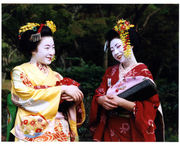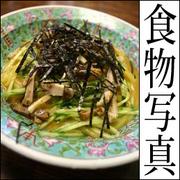通訳案内士試験 英語第1次試験対策<英文解釈のコツ>を公開!
昨年の12月に、JNTOより、2013年度の筆記試験につきまして発表があり、英語と他の外国語の実施方法が明らかになりましたのでお知らせします。
●2013年度の外国語筆記試験の実施方法:
(1)英語の場合:マークシート方式を導入する。
?記述式:英文和訳問題1題(配点35 点程度)、和文英語訳問題1題(15点程度)、英語による説明問題1題(15点程度)
?マークシート方式:英語による説明(あるテーマ、用語等について説明する)問題1題(20 点程度)、単語外国語訳問題1題(15 点程度)
(2)英語以外の外国語の場合:従来通り、すべて記述式で行う。
外国語文の読解問題2題(配点35 点程度)、外国語文和訳問題1題(15点程度)、和文外国語訳問題1題(15 点程度)、外国語による説明(あるテーマ、用語等について外国語で説明する)問題1題(20 点程度)、単語外国語訳問題1題(15 点程度)
●<英文和訳問題>が合否のカギとなる!
以上により、英語においては、配点が一番多く、かつ、点数に一番差がつきやすい英文和訳問題の対処法が合否のカギになります。
最近、「英文解釈の方法、コツ」を教えて欲しいというメールを何通が頂戴しましたが、これは、上記の改変を踏まえた上でのご要望であったと思います。
そこで、今回は、<英文解釈のコツ>を動画にて公開させていただくことにいたしました。
(1)まず、下記のPDF、または、このメルマガ全体を印刷してください。
http://
(2)次に、下記の動画をご覧ください。
http://
━━━━━━━━━
<英文解釈のコツ>
━━━━━━━━━
●英文解釈の鉄則
(1)鉄則その1
英文は、すべて5文型に当てはまります。これが、英文解釈の唯一の羅針盤ですから、対象となる英文は何文型なのかを、まず確認することからすべてが始まります。固い信念を持って当ること。
<第1文型>S+V
<第2文型>S+V+C
<第3文型>S+V+O
<第4文型>S+V+O+O
<第5文型>S+V+O+C
(2)鉄則その2
英文を、5文型を中心に文法解析する。文法解析ができなければ、正確な理解は絶対にできない。文法解析ができれば、<Time>や<Newsweek>の英文でも、自信を持って正しく理解することができます。
●2012年度英語第1次筆記試験<問題1>より抜粋
<第1文>
【Westerners (who have had little contact with Asian cultures)】are likely to wonder about【the concept of “face,” (which they have heard of extremely important.) 】
【和訳】
アジアの文化にほとんど接触したことのない西洋人は、彼らが極めて重要であると聞いている面目という概念について疑念を抱きやすい。
【解説】
He is likely to come. 彼はやって来そうだ。
face【名】体面、面目、メンツ
hear of: 〜について(間接的に)聞く。hear(他動詞)は「直接的に聞く」の意。
[自動詞 + 前置詞] ⇒ 他動詞の働き
This is a company I have not heard of before. : これは初めて聞く会社です。
【文法解析】
[主語Westerners][述部have heard of][目的語the concept of “face”](副詞extremely)[目的補語important.]
<第2文>
Is “face” comparable to 【what (in some cultures) is called “honor?” 】
【和訳】
面目とは、一部の文化圏で名誉と呼ばれているものに相当するのでしょうか。
【解説】
comparable to:相当する。匹敵する。
●2012年度英語第1次筆記試験<問題1>
【問題1】次の英文を読み、後の問いに答えなさい。(20点)
Westerners who have had little contact with Asian cultures are likely to wonder about the concept of “face,” which they have heard ( A ) extremely important.
Is “face” comparable to what in some cultures is called “honor?”
Or is it like what some people call “reputation” or “image?”
Is the concern to save face and not to “lose face“ a kind of cultural neurosis, an exaggerated worry about what others think, rather than something more tangible?
When seen in the context of relationships, how one is regarded by others, and how one represents those for whom one is responsible is central.
The difficulty that some people may have in understanding “face” in Japan stems largely from emphasis placed by Western values on the individual.
The Japanese, in contrast, emphasize the group -- the family, school, company -- ( B ) which the individual is a part.
From the Japanese perspective, therefore, how one treats others and is treated by them is of supreme importance, (1)and so to slight another or to feel slighted, to cause embarrassment or be embarrassed, disturbs the delicate web of relationships that are essential to survive.
What others think of a person really does matter in Japan.
The word “face” expresses very well this sense of how someone is seen or sees another.
(2)(アthings, イthe Japanese mother, ウdo or, エher child, オnot to, カteaches, キcertain, クsay,)“ or else people will laugh at you.”
This is a concern for face and appeals to the primary means of social control in the culture: shame. Japan is often identified as a “shame culture,” where proper behavior is ensured through outside social pressure.
This contrasts with the kind of controls identified with Western societies generally, where it is the internal feelings, like guilt, that are said to guide behavior.
This is the matter of “conscience,” or of being “God fearing.”
This well-known distinction ( C ) shame cultures and guilt cultures is, of course, not so clear-cut.
Individuals everywhere can be very sensitive to what others say and think, and Japanese can be guided by (3)an inner gyroscope that seems inalterable in the face of adversity.
Nevertheless, concern for what others think, most importantly those others who constitute one’s group, is a basic value and fact of life in Japan.
1-1 空欄(A)(B)(C)に適切な1語を入れなさい。(6点)
1-2 下線部(1)を日本語に訳しなさい。(6点)
1-3下線部(2)を意味が通るように並べ替え、1番目、4番目と、6番目に来る語(句)の記号を書きなさい。ただし、文頭の語も小文字で表記されている。(2点)
1-4 著者は「恥の文化」 とはどのようなものであると述べているか。句読点を含めて40宇以内の日本語で書きなさい。(4点)
1-5下線部(3)と同じものを指す1語を、本文中から探して漢字2字の日本語に訳しなさい。(2点)
●英文解析力をアップさせるには
まず、下記の教材をご覧ください。
教本Aの<授業解説テキスト>
http://
教本Bの<授業解説テキスト>
http://
これらは、第1次英語筆記試験対策<教本学習コース>の<授業解説テキスト>ですが、この中では、全ての英文を詳細、緻密に文法解析しております。本書を読んで、皆さんも是非、自分でも文法解析できるように訓練をしていただきたいと存じます。
なお、<教本学習コース>のDVDコースについては、下記をご覧ください。
━━━━━━━━━━━━━━━━━━━━━━━━━
最強、最高のハローの受験対策教材の特売セール実施中!
90%以上の割引は当たり前!
<ありえへん価格>でご奉仕中です!
http://
━━━━━━━━━━━━━━━━━━━━━━━━━
●通訳案内士試験合格必勝<無料自習サイト>
(1)第1次英語筆記試験対策英語力診断テスト
https:/
(2)第1次邦文試験対策特訓1800題(地理、日本史、一般常識)
http://
(3)ハロー英語道場<真剣勝負>
http://
━━━━━━━━━━━━━━━━━━
●通訳案内士試験受験対策合格必勝メルマガ!
・PC版メルマガ<通訳案内士受験情報>(無料)登録のお申込み:
http://
バックナンバーは、下記サイトをご覧ください。
http://
※PC版、モバイル版の違い
PC版、モバイル版ともに、内容は基本的には同じですが、PC版の方が情報量が多いので、できればPC版に登録してモバイル版を補助的に使用していただけると良いと思います。
━━━━━━━━━━━━━━━━━━
昨年の12月に、JNTOより、2013年度の筆記試験につきまして発表があり、英語と他の外国語の実施方法が明らかになりましたのでお知らせします。
●2013年度の外国語筆記試験の実施方法:
(1)英語の場合:マークシート方式を導入する。
?記述式:英文和訳問題1題(配点35 点程度)、和文英語訳問題1題(15点程度)、英語による説明問題1題(15点程度)
?マークシート方式:英語による説明(あるテーマ、用語等について説明する)問題1題(20 点程度)、単語外国語訳問題1題(15 点程度)
(2)英語以外の外国語の場合:従来通り、すべて記述式で行う。
外国語文の読解問題2題(配点35 点程度)、外国語文和訳問題1題(15点程度)、和文外国語訳問題1題(15 点程度)、外国語による説明(あるテーマ、用語等について外国語で説明する)問題1題(20 点程度)、単語外国語訳問題1題(15 点程度)
●<英文和訳問題>が合否のカギとなる!
以上により、英語においては、配点が一番多く、かつ、点数に一番差がつきやすい英文和訳問題の対処法が合否のカギになります。
最近、「英文解釈の方法、コツ」を教えて欲しいというメールを何通が頂戴しましたが、これは、上記の改変を踏まえた上でのご要望であったと思います。
そこで、今回は、<英文解釈のコツ>を動画にて公開させていただくことにいたしました。
(1)まず、下記のPDF、または、このメルマガ全体を印刷してください。
http://
(2)次に、下記の動画をご覧ください。
http://
━━━━━━━━━
<英文解釈のコツ>
━━━━━━━━━
●英文解釈の鉄則
(1)鉄則その1
英文は、すべて5文型に当てはまります。これが、英文解釈の唯一の羅針盤ですから、対象となる英文は何文型なのかを、まず確認することからすべてが始まります。固い信念を持って当ること。
<第1文型>S+V
<第2文型>S+V+C
<第3文型>S+V+O
<第4文型>S+V+O+O
<第5文型>S+V+O+C
(2)鉄則その2
英文を、5文型を中心に文法解析する。文法解析ができなければ、正確な理解は絶対にできない。文法解析ができれば、<Time>や<Newsweek>の英文でも、自信を持って正しく理解することができます。
●2012年度英語第1次筆記試験<問題1>より抜粋
<第1文>
【Westerners (who have had little contact with Asian cultures)】are likely to wonder about【the concept of “face,” (which they have heard of extremely important.) 】
【和訳】
アジアの文化にほとんど接触したことのない西洋人は、彼らが極めて重要であると聞いている面目という概念について疑念を抱きやすい。
【解説】
He is likely to come. 彼はやって来そうだ。
face【名】体面、面目、メンツ
hear of: 〜について(間接的に)聞く。hear(他動詞)は「直接的に聞く」の意。
[自動詞 + 前置詞] ⇒ 他動詞の働き
This is a company I have not heard of before. : これは初めて聞く会社です。
【文法解析】
[主語Westerners][述部have heard of][目的語the concept of “face”](副詞extremely)[目的補語important.]
<第2文>
Is “face” comparable to 【what (in some cultures) is called “honor?” 】
【和訳】
面目とは、一部の文化圏で名誉と呼ばれているものに相当するのでしょうか。
【解説】
comparable to:相当する。匹敵する。
●2012年度英語第1次筆記試験<問題1>
【問題1】次の英文を読み、後の問いに答えなさい。(20点)
Westerners who have had little contact with Asian cultures are likely to wonder about the concept of “face,” which they have heard ( A ) extremely important.
Is “face” comparable to what in some cultures is called “honor?”
Or is it like what some people call “reputation” or “image?”
Is the concern to save face and not to “lose face“ a kind of cultural neurosis, an exaggerated worry about what others think, rather than something more tangible?
When seen in the context of relationships, how one is regarded by others, and how one represents those for whom one is responsible is central.
The difficulty that some people may have in understanding “face” in Japan stems largely from emphasis placed by Western values on the individual.
The Japanese, in contrast, emphasize the group -- the family, school, company -- ( B ) which the individual is a part.
From the Japanese perspective, therefore, how one treats others and is treated by them is of supreme importance, (1)and so to slight another or to feel slighted, to cause embarrassment or be embarrassed, disturbs the delicate web of relationships that are essential to survive.
What others think of a person really does matter in Japan.
The word “face” expresses very well this sense of how someone is seen or sees another.
(2)(アthings, イthe Japanese mother, ウdo or, エher child, オnot to, カteaches, キcertain, クsay,)“ or else people will laugh at you.”
This is a concern for face and appeals to the primary means of social control in the culture: shame. Japan is often identified as a “shame culture,” where proper behavior is ensured through outside social pressure.
This contrasts with the kind of controls identified with Western societies generally, where it is the internal feelings, like guilt, that are said to guide behavior.
This is the matter of “conscience,” or of being “God fearing.”
This well-known distinction ( C ) shame cultures and guilt cultures is, of course, not so clear-cut.
Individuals everywhere can be very sensitive to what others say and think, and Japanese can be guided by (3)an inner gyroscope that seems inalterable in the face of adversity.
Nevertheless, concern for what others think, most importantly those others who constitute one’s group, is a basic value and fact of life in Japan.
1-1 空欄(A)(B)(C)に適切な1語を入れなさい。(6点)
1-2 下線部(1)を日本語に訳しなさい。(6点)
1-3下線部(2)を意味が通るように並べ替え、1番目、4番目と、6番目に来る語(句)の記号を書きなさい。ただし、文頭の語も小文字で表記されている。(2点)
1-4 著者は「恥の文化」 とはどのようなものであると述べているか。句読点を含めて40宇以内の日本語で書きなさい。(4点)
1-5下線部(3)と同じものを指す1語を、本文中から探して漢字2字の日本語に訳しなさい。(2点)
●英文解析力をアップさせるには
まず、下記の教材をご覧ください。
教本Aの<授業解説テキスト>
http://
教本Bの<授業解説テキスト>
http://
これらは、第1次英語筆記試験対策<教本学習コース>の<授業解説テキスト>ですが、この中では、全ての英文を詳細、緻密に文法解析しております。本書を読んで、皆さんも是非、自分でも文法解析できるように訓練をしていただきたいと存じます。
なお、<教本学習コース>のDVDコースについては、下記をご覧ください。
━━━━━━━━━━━━━━━━━━━━━━━━━
最強、最高のハローの受験対策教材の特売セール実施中!
90%以上の割引は当たり前!
<ありえへん価格>でご奉仕中です!
http://
━━━━━━━━━━━━━━━━━━━━━━━━━
●通訳案内士試験合格必勝<無料自習サイト>
(1)第1次英語筆記試験対策英語力診断テスト
https:/
(2)第1次邦文試験対策特訓1800題(地理、日本史、一般常識)
http://
(3)ハロー英語道場<真剣勝負>
http://
━━━━━━━━━━━━━━━━━━
●通訳案内士試験受験対策合格必勝メルマガ!
・PC版メルマガ<通訳案内士受験情報>(無料)登録のお申込み:
http://
バックナンバーは、下記サイトをご覧ください。
http://
※PC版、モバイル版の違い
PC版、モバイル版ともに、内容は基本的には同じですが、PC版の方が情報量が多いので、できればPC版に登録してモバイル版を補助的に使用していただけると良いと思います。
━━━━━━━━━━━━━━━━━━
|
|
|
|
|
|
|
|
通訳案内士は民間外交官! 更新情報
-
最新のアンケート
通訳案内士は民間外交官!のメンバーはこんなコミュニティにも参加しています
人気コミュニティランキング
- 1位
- 大人のmixi【おとミク】
- 6474人
- 2位
- 食べ物写真をつい撮ってしまう人
- 19244人
- 3位
- 写真を撮るのが好き
- 208299人
























